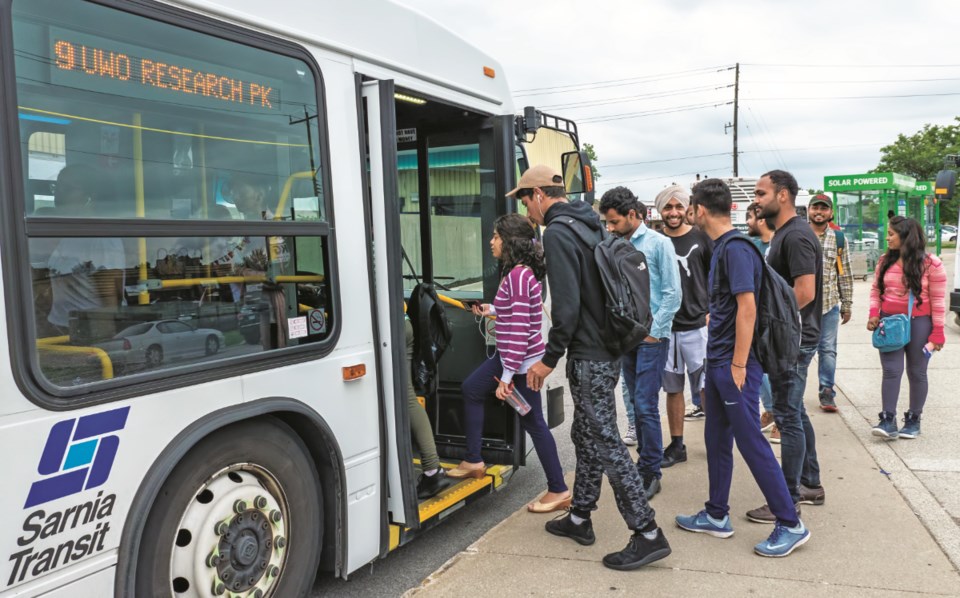Sarnia Transit plans to have two new electric buses on the road for 2025.
The proposed city budget for 2025 includes $2.9 million for zero-emission transit fleet upgrades which adds to the $2.5 million that has already been allocated in the Council-approved 2024 budget.
Part of the City of Sarnia’s Climate Change Action Plan includes incorporating electric vehicles into its transit fleet. The plan, approved in November 2021, acknowledges the reality of climate change, the urgency of taking action, and the importance of change on the local level. The plan’s overall strategy includes increasing transit accessibility, service, and ridership.
The purchase of electric buses was originally slated for 2023-2024, but has been delayed due to the length of the grant approval process.
A new 40-foot electric bus would cost at least $1.2 million to purchase, according to Michelle Carter, Sarnia Transit Manager. “As we see with other municipalities, the price tag of converting a whole fleet of buses is quite large,” she says. “We are starting small. We will try it out with two buses and then take that back to Council.”
The majority of funding (80%) for the eco-friendly fleet upgrades comes from the Rural Transit Solutions Fund, a federal program that supports the purchase of zero-emission public transit vehicles. Most available grants are tied to electrification.
“We will continue to pursue any grants that come available to offset the cost,” says Michelle Carter.
Transit management will submit a report to the Council with the results of a CUTRIC (Canadian Urban Transit Research & Innovation Consortium) study assessing the feasibility of electric buses in Sarnia.
Carter points to the importance of working with other agencies and learning from jurisdictions throughout Ontario, the country, and the world, that have more experience with electric public vehicles.
Regarding operating costs for electric buses versus standard buses, Michelle Carter says it depends on many factors, such as the length of routes and when and how the vehicles must be charged. “We will have to be very conscious to make sure we get the most out of it,” she tells us.
Future transit fleet expansion will not be all electric vehicles, however. The city is still using up existing funding awarded in 2021 through ICIP (Investing in Canada Infrastructure Program) which is tied to purchasing gas and diesel-powered buses.
“The most important part of this is that we maintain a fleet to get the service to the community,” Carter says. As for the two new electric buses she is hopeful about getting them on the road in the next year. “This is new to us,” she says, “and we will collect as much data as we can as we go through this.”
